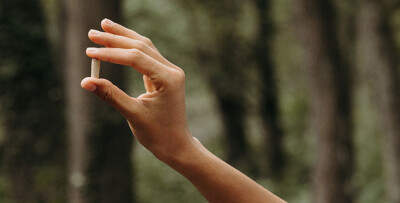A l'occasion de cette célébration, les Iraniens préparent un autel où chaque élément symbolise le renouveau et la renaissance.
Chez Atelier Nubio, nous sommes très sensibles aux rituels autour de la nourriture. Au delà de la valeur “nutritionnelle” de ce que l’on met dans notre corps, notre définition de la “beauty food” inclut le rapport charnel, culturel et énergétique avec notre nourriture – son origine, les mains qui l’ont touchée & préparée, sa couleur, son parfum, ce qu’elle évoque pour nous et comment nous allons la manger, où, avec qui. La nourriture est le plus puissant des soins de beauté.
Nowruz est une illustration d'un somptueux rituel autour de nourritures spirituelles (les 7 "offrandes" ne sont pas mangées), qui tissent des liens et font vibrer des traditions.
En harmonie avec la nature qui renait au Printemps, Nowruz est l'occasion de débarrasser de ce qui ne nous sert plus et de manifester de nouvelles habitudes, émotionnelles, matérielles et spirituelles pour la nouvelle année.
Les célébrations durent 13 jours et sont ponctuées par différents rituels. La veille de l'équinoxe de Printemps, la famille iranienne installe un petit autel appelé "Haftseen" où chacun des 7 éléments symbolise les qualités qui vint faire vibrer la nouvelle année. Chaque élément commence par la lettre "s" :
Sabzeh (pousses d'orge, de blé ou de lentilles ): symbolisent le renouveau et la renaissance, représentent l'arrivée du Printemps et le cycle de la vie.
Samanu (une crème sucrée à base de germe de blé ): symbolise la fertilité et la prospérité
Senjed ( fruit sec oléganeux): symbolise l'amour divin, la connexion entre les hommes et la compassion.
Seer (ail): symbolise la santé et la médecine - et aussi la protection contre les mauvais esprits.
Seeb (pomme): symbolise la beauté et l'éternité - et la beauté de la vie.
Somaq (baies de sumac): symbolisent le levé du soleil et le triomphe de la lumière sur les ténèbres, et la victoire du bien sur les forces du mal
Serkeh (vinaigre): symbolise la maturité et la sagesse gagnée tout au long des expériences de la vie.
Sonbol (jacinthe): symbolise le Printemps, l'éphémérité de la vie. La jacinthe représente aussi la croissance et la finitude de la vie.
Sekeh (pièces de monnaie): représente la prospérité.
Version anglaise
The history Nowruz, or "new day" in Persian, is an ancient (dating back to 3000 years ago) pagan festival that marks the beginning of spring and celebrates the rebirth of nature. It is the Persian New Year and the first day of spring. It begins at the exact moment of the Northern Hemisphere’s vernal equinox, typically between March 19 and 22.
The celebrations last for 13 days, and it’s an opportunity to reflect on the past and set intentions for the future - doing a cleanse and planting seeds emotionally, physically and spiritually. .
Nowruz has a lot of symbolism around renewal—renewal of nature, renewal of relationships. To set a new intention of how we’d like to move into the new year, using our connection to nature as an anchor. So we take this time to clean our homes, closets, change up our daily routine, reevaluate our lifestyles and relationships.
(Extra info: Before Nowruz, the ancient festival period starts with a night of fire ceremonies (called Chahar-shanbe-soori); a ritual to let go of all that is no longer serving us as we jump over fire. To purify, before stepping into spring, a time for cleanse and planting new seeds for the coming year.
The Nowruz alter/offering table It is an ancient Persian custom/home altar that is traditionally put up the day before spring equinox. It represents the harmony of the elements, the seen and unseen realms, with various symbols included as a call to the natural forces to bless the year ahead.
Creating an altar that is about bringing the qualities we want into the new year - through earthly elements.
The haftseen table is usually decorated with seven items – since seven is considered a lucky number. Each item begins with the letter sin (s) in Persian, and each item is a symbol of spring and renewal, including:
Sabzeh (Wheat, barley, or lentil sprouts): Symbolizing rebirth and renewal, representing the arrival of spring and the cycle of life.
Samanu (A sweet pudding made from wheat germ): symbolizing fertility and affluence.
Senjed ( Dried oleaster fruit): symbolizing love and compassion. It represents the divine love and the interconnectedness of humanity.
Seer (Garlic): symbolizing medicine and health. It signifies protection against ailments and evil spirits.
Seeb (Apple): symbolizing beauty and health. It represents the eternal beauty of life.
Somaq (Sumac berries): symbolizing sunrise and the triumph of light over darkness. It represents the victory of good over evil.
Serkeh (Vinegar): symbolizing the maturity and wisdom gained through life experiences.
Sonbol (Hyacinth flower): symbolizing spring and the fragility of life. It represents growth, beauty, and the transience of existence.
Sekeh (coins): representing prosperity
Extra information: Nowruz is a time for spring cleaning, buying new clothes, visiting friends and relatives and renewing bonds. On the 13th day of the New Year, falling on April 1st usually, the celebrations finally end. Since the 13th is an unlucky day, entire families go on picnics and take with them the sprouts (sabzeh) from the haftseen table. The sabzeh is thrown into flowing water, symbolizing a "letting go" of the misfortunes of the coming year.

